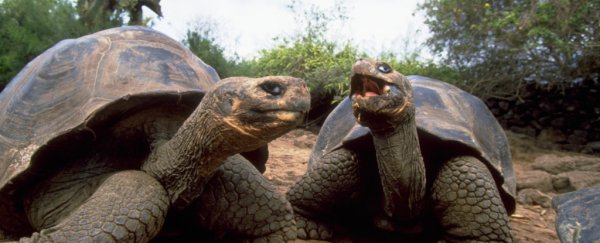A new published and incredibly thorough study of ectothermic tetrapods – reptiles and amphibians – gives experts a fresh insight into the reasons why cold-blooded animals tend to have such long lifespans in relation to their size.
It's the most comprehensive study of longevity and aging ever published: 114 different scientists looking at 107 different wild populations that cover 77 different species. Decades' worth of data on animals' mode of temperature regulation, environmental temperature, distinctive characteristics and the pace of life was compiled and analyzed.
Of the 30 known vertebrate species that can survive past an age of 100 years, 26 of them are ectotherms – and so scientists were keen to find out how these animals are managing to avoid the inevitability of death for quite so long.
The study turned up multiple findings, including a link between physical or chemical traits that protect species – think hard armor, spines, shells, or a venomous bite – and slower aging. Physical traits that protected species were also linked to greater lifespan.
Technically, these are known as protective phenotypes, and they can make all the difference.
"These various protective mechanisms may reduce animals' mortality rates within generations," says evolutionary biologist Beth Reinke, from Northeastern Illinois University. "Thus, they're more likely to live longer, and that can change the selection landscape across generations for the evolution of slower aging."
"It sounds dramatic to say that some species don't age at all, but basically their likelihood of dying does not change with age once they're past reproduction."
If an animal has a one in 100 chance of dying aged 10, and a one in 100 chance of dying aged 90, that's negligible aging.
For the average woman in the US, in contrast, the chances are one in 2,500 aged 20 and one in 24 aged 80.
Negligible aging was seen in at least one species in each ectotherm group, including frogs, salamanders, lizards, crocodilians, and turtles.
However, the research didn't back up a different hypothesis: relying on external temperatures to regular their body temperature (as cold-blooded animals do) and the associated lower metabolism wasn't a guarantee of long life. The team found that ectotherms can live much longer lives or much shorter lives compared with similar sized endotherms (warm-blooded animals).
This variation in aging rates and longevity was much greater than it is in birds and mammals. Slowly aging wild turtles were singled out by the researchers: it was the only species studied where a lower metabolism was linked to slower aging and longer lifespan, and it was the species where the protective phenotype effect was strongest.
"It could be that their altered morphology with hard shells provides protection and has contributed to the evolution of their life histories, including negligible aging – or lack of demographic aging – and exceptional longevity," says evolutionary biologist Anne Bronikowski, from Michigan State University.
Comparative phylogenetic methods were applied to data from animals that had been captured, tagged, released back into the wild and observed.
The research detailed in this study is likely to prove useful in the future in all kinds of ways, whether that's looking into patterns of aging in humans or working on conservation efforts for cold-blooded animals – and that's partly down to the breadth of time it covers.
There's also plenty more to look into off the back of the study: the team wants to look at how soft shell turtles and hard shell turtles differ in terms of their aging, which may be enough to more clearly identify the reasons behind it.
"Longitudinal research is responsible for many research findings, such as the monogamy and host-parasite relations in sleepy lizards," says ecologist Mike Gardner, from Flinders University in Australia.
"These long-term datasets underpinning animal lifespans are also vital for reptile conservation efforts."
The research has been published in Science.
